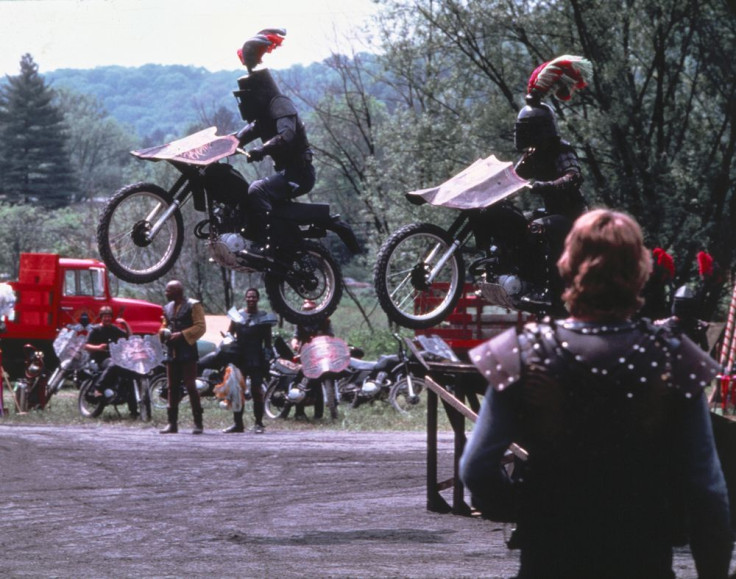George Romero died Sunday, July 16, passing in his sleep and surrounded by family, with the score to one his favorite movies, John Ford’s The Quiet Man, playing.
Romero will be most remembered for the zombie movies he directed, beginning with 1968’s Night of the Living Dead, which transformed the zombie from a manifestation of subjection and control — like the voodoo lord of The Plague of Zombies, released just two years earlier — into a specter of apocalyptic portent, as societal order disappears and humanity must find itself again, opposite the implacable assault of the dead. Romero would cement his reputation as a master of horror with subsequent entries in his Living Dead series, further earning a well-deserved reputation for social commentary, like the spiritual impoverishment of consumerism presented in Dawn of the Dead (though one of its opening scenes, with SWAT officers wreaking havoc in a housing project, may be even more germane in today’s police state climate) or the lower class uprising of Land of the Dead.
But the reputation of Romero’s Dead movies is so towering that many assume them to be Romero’s only major contributions to film. Nothing could be further from the truth. Here are five non-zombie George Romero movies deserving of more attention.
Martin
Romero’s directorial style is straightforward, with camera tricks and fancy compositions few and far between. Mostly, Romero movies give a straight-on, medium-shot perspective on reality, creating in his zombie movies a sense of immediacy and blunt reality. Martin, his take on the vampire movie, is unlikely anything else he’s ever made. Hallucinatory, swirling and strange, Martin follows a young man who must obtain his blood by hook or by crook, using syringes of drugs to konk out the unsuspecting and opening their skin with straight razors for a slurp. More like a creepy sex predator than a romantic, fanged lothario, Martin strips bare the vampire and presages the urban, anti-romantic grunginess of later horror movies like Maniac, The New York Ripper and Henry: Portrait of a Serial Killer.
The Dark Half
Maybe the most underrated Stephen King adaptation, The Dark Half follows literary author Thad Beaumont (Timothy Hutton) and his confrontation with the supernatural manifestation of the trashy identity he’d adopted to writer grocery store thrillers: George Stark. Not only is the body count high, as Stark tears through police officers (in Castle Rock, Maine, of course), but The Dark Half is also loaded with some of Romero’s most surreal and experimental imagery, as the bond between two halves of the same man are explored in nightmares and visions.
Monkey Shines
Only George Romero could balance the strange blend of quadriplegic trauma drama and psychic monkey slasher violence of Monkey Shines. Ella, the service monkey who kills based on the emotional whims of her human ward, becomes a compelling character on her own, like a miniature, murderous version of Link or Caesar.
Creepshow
George Romero’s most famous movie outside of the Living Dead series, Creepshow remains the best anthology horror movie ever made. Creepshow brings out the best of both Romero and the movie’s writer, Stephen King (who also gives his best acting performance in “The Lonesome Death of Jordy Verrill”). Scary, goofy, weird, characterful and inventive, Creepshow makes the anthology film — a surprisingly tricky subgenre, with far more failures than successes — look effortless. Meteor shit!
Knightriders
A humanist masterpiece, Knightriders restages Arthurian legend in a travelling renaissance fair with the best gimmick of all time: they joust on motorcycles instead of horseback. The troupe, headed by Ed Harris (in his first starring role) as King Billy, not only play-acts knightly virtue and competition for the sunburnt crowds of rural Pennsylvania (including a cameo by Stephen King as a drunken oaf), but also live the lifestyle of knight errants and chivalric heroes, right down to the mystic visions spun by iconic storyteller Brother Blue as Merlin. As Billy’s show becomes more famous, him and his followers deal with the temptations of fame and wealth, cracking apart when Morgan (special effects makeup legend Tom Savini, with a surprisingly fantastic performance) desires the crown for himself. Can they push back the capitalistic forces working to grind them into product?
Not only is Knightriders a fantastic drama, as members of the huge ensemble (including Romero regulars like Ken Foree and Patricia Tallman) deal with corrupt cops, sexist double standards and homosexual desire, but also a thrilling motorcycle movie stuffed with stunts. Knightriders is proof that George Romero’s directorial vision stretches far beyond horror movies. It’s his most underseen masterpiece.
So sure, pop on Day of the Dead to honor George Romero. But follow it up with Knightriders. Everyone watch Knightriders. Quit your job and watch Knightriders. Just go watch Knightriders.
And never forget the advice Romero wrote to his fans with nearly every autograph: “Stay Scared!”
















![[EG April 19] Best 'Stardew Valley' Mods That Will Change](https://d.player.one/en/full/226012/eg-april-19-best-stardew-valley-mods-that-will-change.png?w=380&h=275&f=955520b8313253ee3c39c791f6210f38)


